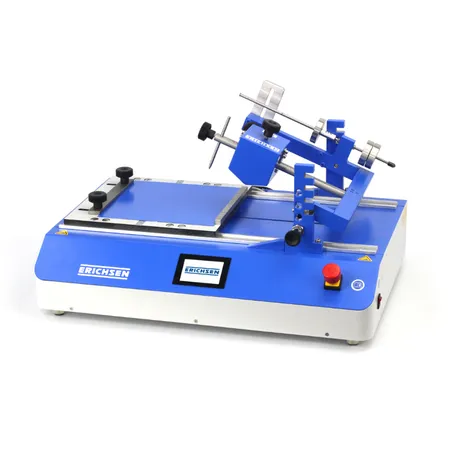Optimized Scratch Hardness Testing for Durable Surfaces
The ERICHSEN LINEARTESTER Model 249 represents a pinnacle of innovation in the field of scratch hardness testing for sheet metal surfaces. This tabletop unit is engineered for precision, user-friendliness, and versatility, offering capabilities for scratch, rub, and wipe testing, along with resistance evaluation against chemicals. Its cutting-edge design facilitates scribe/scratch tests, cycle abrasion tests, crockmeter tests, MEK tests, and general solvent resistance tests.
Featuring an adjustable test force range from 0.5 N to 20 N and a 4-way height-adjustable load arm, the Model 249 is equipped for a wide array of test scenarios. Its intuitive touchscreen operation and electric scribe detection for insulating coatings on conductive substrates further enhance the testing process, ensuring accuracy and repeatability.
Variable testing speeds, adjustable stroke lengths, and a broad selection of test tools, including those with a hard, “golden” layer for easy wear identification, make the LINEARTESTER 249 Smart an indispensable tool for assessing surface durability.

